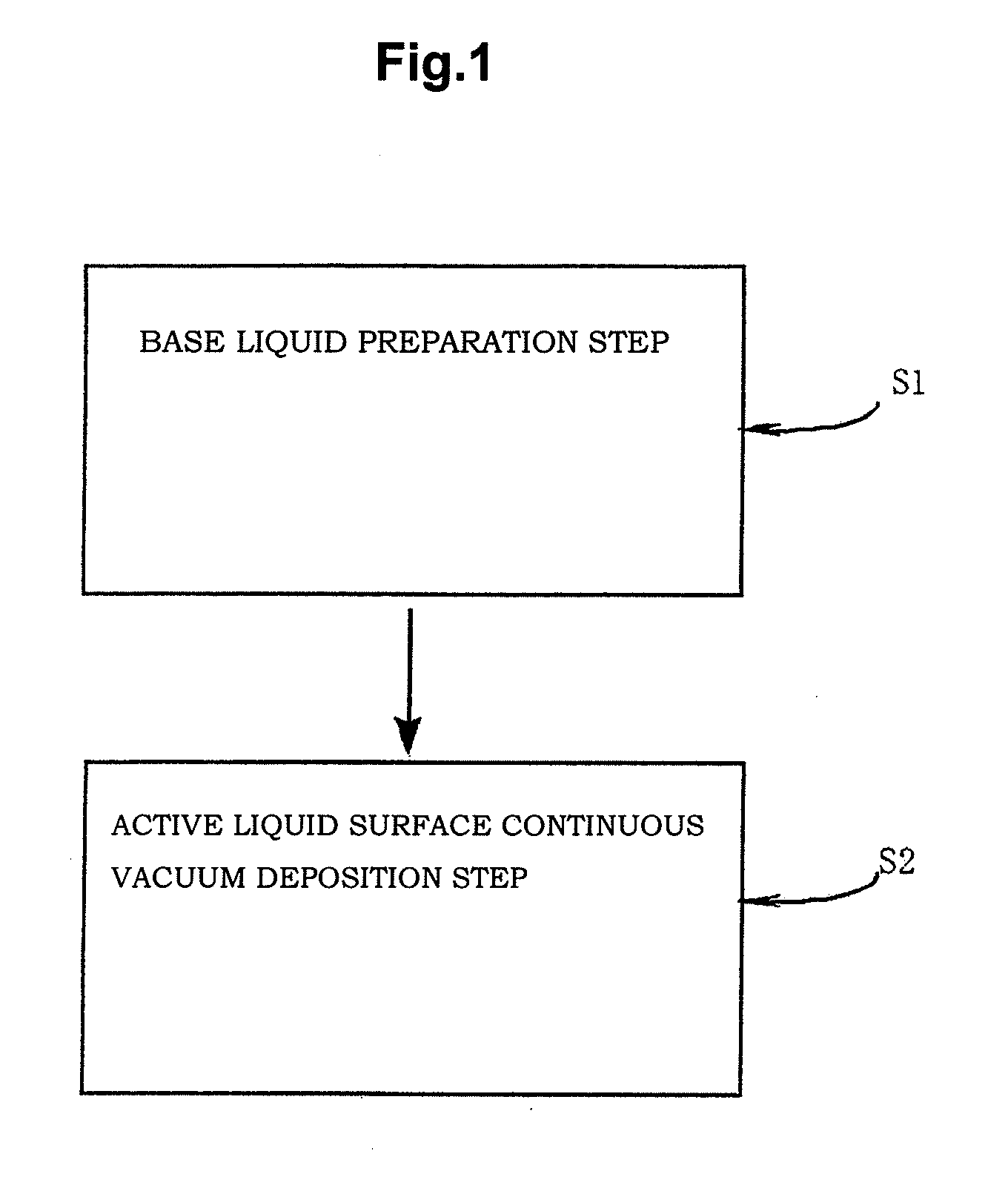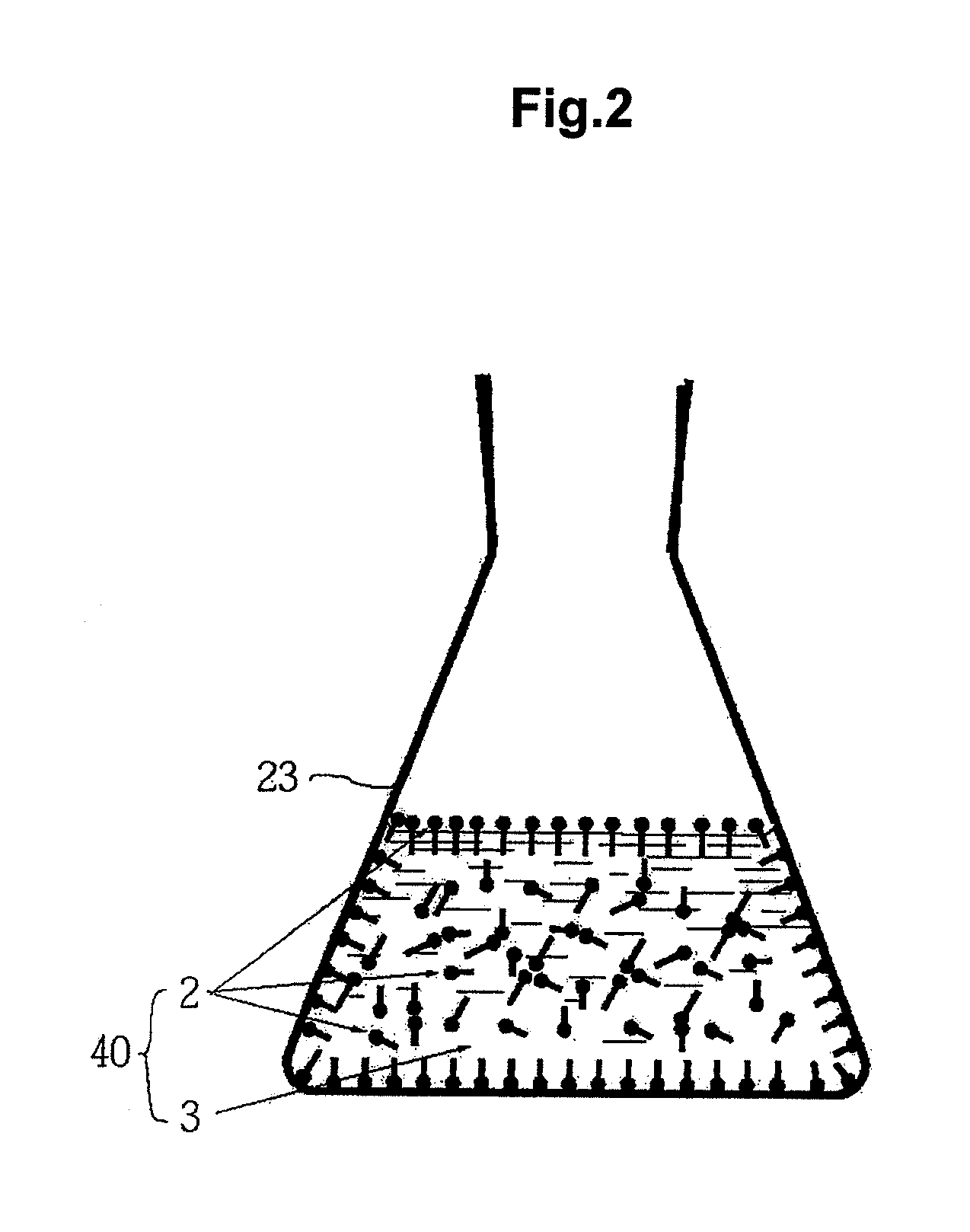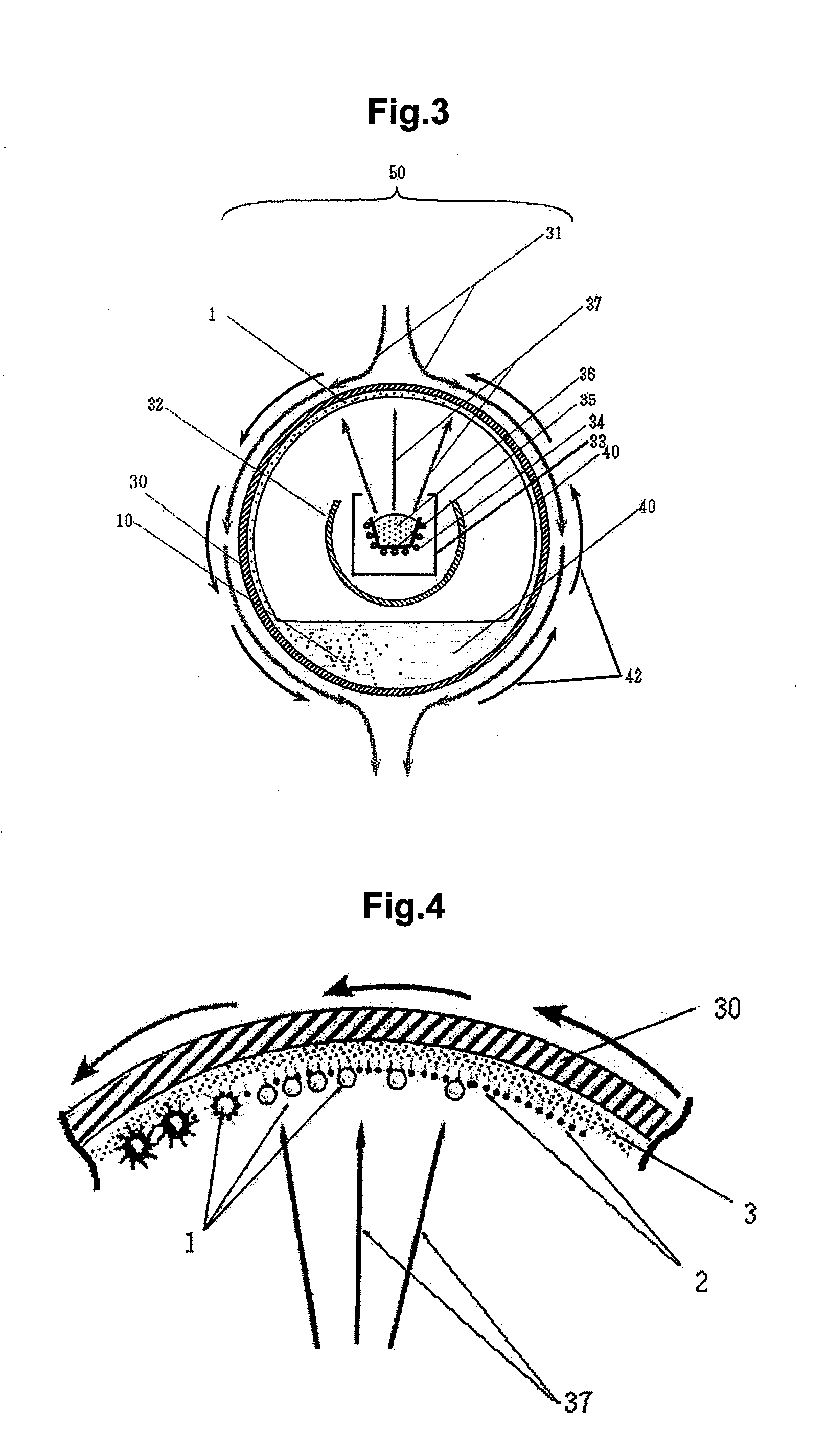Method for producing a metal nanoparticle colloid
a metal nanoparticle and colloidal technology, applied in the direction of colloidal chemistry, conductors, transportation and packaging, etc., can solve the problems of difficult to form non-magnetic metal nanoparticle colloids, and difficult to obtain metal nanoparticle colloids of anisotropic shap
- Summary
- Abstract
- Description
- Claims
- Application Information
AI Technical Summary
Benefits of technology
Problems solved by technology
Method used
Image
Examples
example 1
[0080]A base liquid was first prepared using an alkylnaphthalene as a nonpolar hydrocarbon oil and oleylamine (aliphatic amine) as organic molecules at an organic molecule concentration of 18.9% by volume. Then, the prepared base liquid was placed in an active liquid surface continuous vacuum deposition apparatus, and Cu was used as a metal material and the metal material was placed in a crucible. Then, the inside of the vacuum drum was evacuated to 10−5 Torr. The vacuum drum was then rotated so that the base running speed became 127 mm / s. Then, while cooling the vacuum drum with cooling water, a heater arranged around the crucible was heated to heat the metal material. The heating temperature was rendered constant, and the metal material was deposited on the base liquid to produce a metal nanoparticle colloid. Then, the metal nanoparticle colloid (metal nanoparticle colloid in Example 1) was removed from the vacuum drum.
[0081]With respect to the metal nanoparticle colloid in Exampl...
examples 2 to 6
[0082]Metal nanoparticle colloids in Examples 2 to 6 were individually formed in substantially the same manner as in Example 1 except that sorbitan trioleate (sorbitan fatty acid ester), tetraglycerol pentaoleate (polyglycerol fatty acid ester), stearyl mercaptan (mercaptan), polybutenylsuccinic acid tetraethylenepentamine imide (abbreviated to “PBSCTEPAI”) (succinic acid polyethyleneamine), or trioleyl phosphate (phosphate) was used as organic molecules, that the organic molecule concentration was changed to 3.4 to 10% by volume, and that the base running speed was changed to 100 to 150 mm / s.
examples 7 to 11
[0083]Metal nanoparticle colloids in Examples 7 to 11 were individually formed in substantially the same manner as in Example 1 except that Ag was used as a non-magnetic metal material, that oleylamine (aliphatic amine), sorbitan trioleate (sorbitan fatty acid ester), polybutenylsuccinimide (abbreviated to “PBSCI”) (succinic acid derivative), stearyl mercaptan (mercaptan), or trioctylphosphine oxide (abbreviated to “TOPO”) (aliphatic phosphoric oxide) was used, that the organic molecule concentration was changed to 3.5 to 14% by volume, and that the base running speed was changed to 16 to 150 mm / s.
PUM
| Property | Measurement | Unit |
|---|---|---|
| Pressure | aaaaa | aaaaa |
| Diameter | aaaaa | aaaaa |
| Speed | aaaaa | aaaaa |
Abstract
Description
Claims
Application Information
 Login to View More
Login to View More - R&D
- Intellectual Property
- Life Sciences
- Materials
- Tech Scout
- Unparalleled Data Quality
- Higher Quality Content
- 60% Fewer Hallucinations
Browse by: Latest US Patents, China's latest patents, Technical Efficacy Thesaurus, Application Domain, Technology Topic, Popular Technical Reports.
© 2025 PatSnap. All rights reserved.Legal|Privacy policy|Modern Slavery Act Transparency Statement|Sitemap|About US| Contact US: help@patsnap.com



